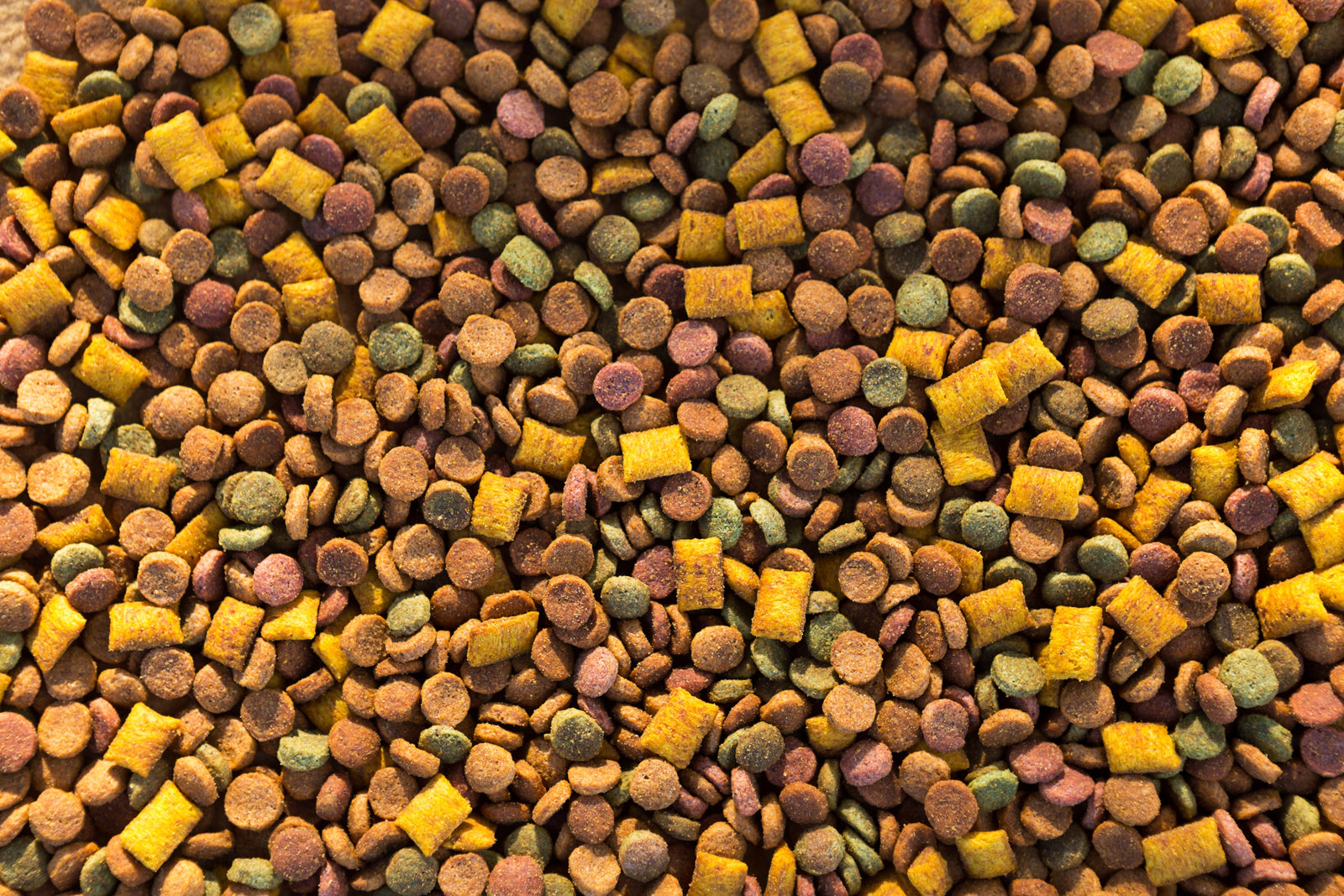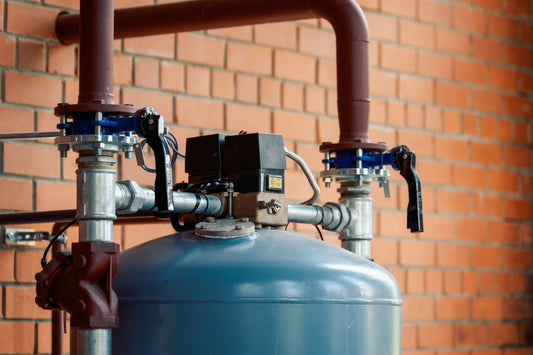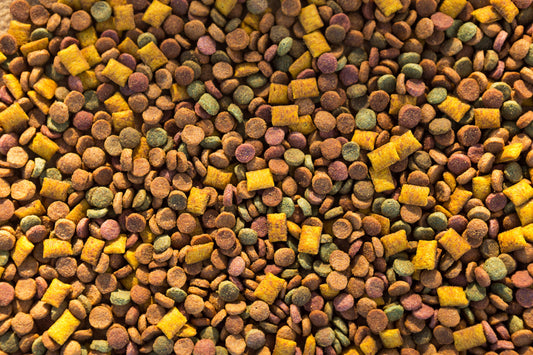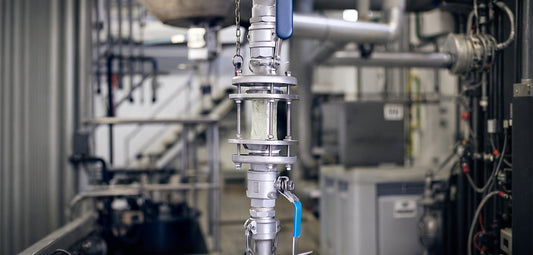
Case Study – Mechanical Level Indication for Pet Food Dye Mixing
Introduction
There are plenty of process control applications that you’d think would be easy enough to solve, were it not for a small detail making things complicated. What’s more, these applications wouldn’t otherwise need complex control solutions – no need for PLCs, controllers, or even relay logic – or their associated costs. A great example of this type of application came our way in the form of pet food dye mixing, which contained one single nuance that threatened to drive the whole project’s costs up to an untenable level. That is, unless we had a solution for dye tank level gauging that could replace traditional sight tubes without jumping straight to electronic level sensors.
About Us
For over 40 years, Thomas Products has served industrial customers through the manufacture and supply of specialized fluid flow, level, pump control, and sight glass instrumentation. Our Bristol, CT, manufacturing campus produces American-made sensors in strict alignment with our veteran ownership's principles of tireless dedication, rigorous standards of quality, and faithfulness to our values and mission.
Application Summary
In the pet food market, food dyes play a major role in product marketing and customer appeal. Since pet foods are mainly made using byproducts of human food production (such as beef and fish processing), their natural appearance profiles are less than appetizing in raw form. For this reason, pet food producers add aesthetic treatments to their products to make them more appealing to their true customers: pet owners. Food dyes are the most common treatment applied to pet foods, which come in a wide range of colors that pet owners interpret in positive ways. From a customer’s perspective, pet food colors directly correlate to the perception of how flavorful and nutritious a food is. For example, deep browns give the impression of high beef content; white for chicken; pink for fish; and bright oranges, yellows, and greens for vegetables.
Challenge
On this project, our customer wanted to scale up their pilot dye mixing process without grossly increasing costs. Doing so hinged on keeping the system mostly manual in operation, and this seemed like an achievable goal for all parts of the system except for tank level control.
At the pilot scale, operators relied on visual tank gauges to make up their dye mix recipes. These sight gauges allowed operators to directly see a tank’s fluid level through its gauge tube. The problem was, the aggressive dye would stain and haze up these tubes very quickly. Over time, the stains would become so bad that operators would need to tear down the gauge assemblies, clean out the tubes by hand, and, within a few cleanings, replace the tubes entirely. This was tolerable at the pilot system’s lower utilization rates, but was not going to be acceptable for full production.
At this juncture, our client had developed a preliminary design for their new full-scale dye mix system and engaged us to see if we could help solve the tank level issue. We asked them to run us through what they had in mind, as follows:
- Skidded four-tank mix system in which water, dye bases, stabilizers, and other additives would be mixed in batches within a fully contained, sealed mix process.
- The system would operate in alternating tank pairs, with one tank mixing a new batch while the other was in operation.
- Water and bulk fluids would be proportionally metered in from separate upstream sources.
- Once blended, the dye mix would run out of these mix tanks to the downstream extruder throughout the day.
- Operators would reference high- and low-level indications on the tanks to know when to switch from empty to full tanks, and also when to make additional batches.
- No components in the system could be vulnerable to dye staining, flaking, or crusting.
- No part of the operation could require operators to open the tank lids after dye was added.
- Dye proportions and batch volumes did not require very tight tolerances, so there was no need for advanced online controls or sensors.
Quote
“We had never seen mechanical level gauges before. Up until [Thomas Products] suggested it, we thought we were going to be stuck choosing between old-school string-float gauges or expensive level controllers. We’re really thankful to avoid all that using these [mechanical] indicators, and that pretty much eliminated all the issues we were worried about with staining.”
- Production Lead, Confidential Pet Food Manufacturer
Solution
Our application engineering team dug into the design criteria that our customer provided, and quickly distilled the project’s goals down even further to a single statement: if we can remove the need for operators to visually see the dye batch volume level directly, we can get rid of sight gauges entirely AND completely avoid adding online sensors. Running with this notion, our team penciled out a solution:
- Analog level feedback was not needed since the upstream metering pumps would handle precision dosing. This left only point-level feedback at key volumes needed for full and empty tank levels.
- To provide operators with visual confirmation of these two volume points (full and empty), mechanical level indicators could provide indirect point level signaling through the sidewall of the tank.
- These mechanical indicators do not rely on direct fluid visibility at all. Instead, our mechanical indicators use a float assembly to magnetically switch a separate colored dial to clearly show operators if the fluid level is or is not at the indicator’s switch point.
- Using mechanical indicators, operators would immediately and easily know what tanks were full and ready for use, and which were empty and ready for blending the next dye batch.
- Best of all, these mechanical indicators are entirely free of any readability issues brought on by dye staining, since the dye never touches the indicator’s dial.
Finishing up our proposed solution, we recommended the Thomas Products Model 5100 Mechanical Sight Indicator based on these features:
- Fully Mechanical, Non-Electrical Level Indicator
- Simple Single-Action Float Switches an Indicator Upon Level Changes
- Uses a Multi-Colored Sight Dial to Indicate Fluid Level
- Red Dial Color Indicates Low Level; Green Dial Indicates Good Level
- No Sight Glass or Window to Stain, Haze, or Break
- Great For Practically All Flowable Fluids of 0.4 Specific Gravity and Above
- Safe for Hazardous Locations
- All T316 Stainless Steel Construction
- 3/4” NPT Standard Pipe Connection
- Wide Temperature Range of -40°F to 225°F
- High Pressure Rating up to 400 PSIg @ 72°F
-
Many Customizable Options, including Brass Materials and High Temp / Pressure Ratings
Results
Eager to do away with all of the issues caused by their existing sight gauges, our customer quickly ordered a pair of mechanical level indicators to try out on one of their pilot dye mix tanks. Within a week, we heard back that operators were thrilled with the results, and the group was ready to move forward with our Model 5100 indicators for their production-scale mix system. From there, we shipped out the full order of indicators to the fabrication shop building the customer’s new mix system, and a few months later, received word that the system’s installation and commissioning had wrapped up with great success. Above all, we were glad to have helped keep this application simple, allowing the customer to grow without adding unnecessary cost or complexity into the (dye) mix.
Data Bullets
- 100% reduction in manual sight gauge cleaning and replacement
- 45% lower maintenance costs on dye mixing systems since switching to mechanical indicators
- 8% less cleaning chemicals used by not needing to clean sight tubes
- 3-5 days standard lead time on mechanical level indicators (expediting available)
Thomas Products welcomes your direct inquiries for both standard and custom applications via our website at https://thomasproductsusa.com/, by email at sales@thomasprod.com, or by phone at (800) 666-9101.




